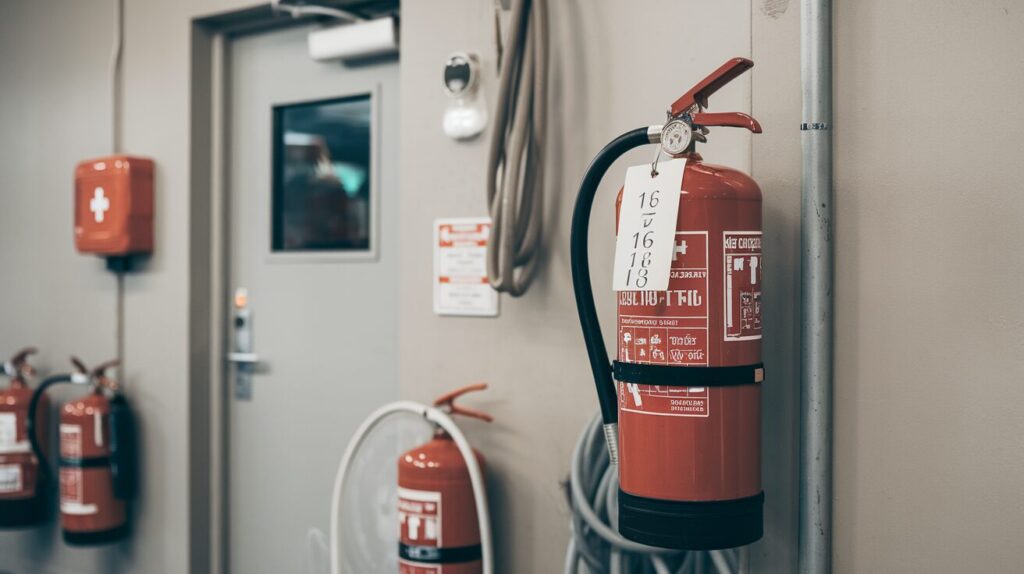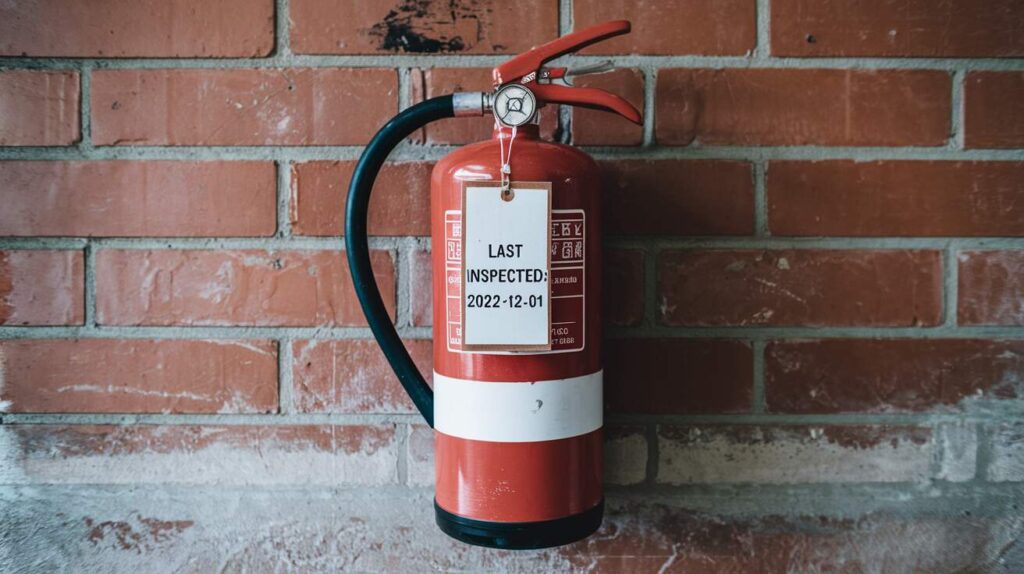Fire safety in the modern fast-moving world has proved to be one of the most acute issues for businessmen as well as for individuals. Despite the fact that fire extinguishers are considered some of the most crucial items of equipment used in combating a fire, servicing, and maintenance are quite critical.
Servicing Fire Extinguishers ensures that such apparatus are at peak performance so they can effectively accomplish what is intended when required to do so. Fire extinguishers are 93.5% effective in resolving issues.
Why Servicing Fire Extinguishers is Essential
Fire safety has become the most important matter in this fast-moving, modern world of both corporate and private sectors. However, while fire extinguishers are indispensable tools when it comes to battling fires, they are dependent on proper maintenance and servicing. Periodic servicing ensures that such devices remain at their optimal conditions when needed for the intended use.
There are several multi-dimensional benefits involved in servicing as follows
- Improved fire safety:
- The fire extinguisher is maintained in good condition throughout the service; therefore, it will always be ready to combat fire.
- Specific Timeframe:
- Many places are regulated for fire safety and require all fire protection equipment, including fire extinguishers, to undergo regular Fire Equipment Inspection and servicing within a specified timeframe.
- Longer Lifespan:
- Fire extinguishers will last longer if serviced regularly. Consequently, the frequency of replacing them reduces.
- Prevention of Major Problems Through Early Detection:
- Regular checks ensure that probable problems are identified early enough to be serviced and not become major disasters such as pressure loss or corrosion, agent depletion among others, and hence do not result in costly breakdowns.

The Role of Fire Extinguisher Servicing in Workplace Safety
Servicing the fire extinguisher is key to maintaining safety at work. In essence, through this method of ensuring that the equipment functions properly, business firms have minimised risks to the level of near-zero accidents resulting from fires. This may include such aspects as potential issues with the device and includes the following:
- Pressure loss:
- In some cases, the pressure gets lost over time because of an ageing process.
- Corrosion:
- Corrosion from moisture and other environmental components remains the biggest risk to the inner components of a fire extinguisher.
- Obstruction:
- Garbage and dirt obstruct the nozzle or any component of the extinguisher so that it fails to work properly as it would be required to do
- Agent depletion:
- An extinguisher’s extinguishing agent depletes over time, mainly when its seal breaks.
Is Servicing Fire Extinguishers a Legal Requirement?
Fire safety codes exist in most places and require regular inspection and maintenance of fire protection equipment, including fire extinguishers. Fire Extinguisher Inspection Requirements typically mandate periodic checks to ensure the equipment is functional and compliant with safety standards.
How Often Should Fire Extinguishers Be Serviced?
The servicing life cycle of the fire extinguisher now becomes relevant for maximum performance and availability during the battle against fires. While some general guidelines do exist, specific service lives must be determined with some considerations:
- Type of Extinguisher:
- There are various types of extinguishers such as water, foam, CO2, and dry chemicals that might require different servicing frequencies.
- Location and Environment:
- Fire extinguishers exposed to extremely hot or cold temperatures, humid environments, or products with a corrosive nature have higher servicing intervals.
- Usage:
- The greater usage of a fire extinguisher would consume the extinguishing agent and subsequently may require higher servicing cycles.

General Servicing Standards
Maintenance and fire extinguisher inspection service typically should be performed annually. In most instances, upon annual inspection, one would discover:
- Visual Inspection:
- No visible signs of physical damage, corrosion, or leakage
- Pressure Gauge Check:
- Should be within range
- Tagging and Labeling:
- The date of the last service and the date of the next service shall be tagged and labeled appropriately
Other Considerations
- High-Risk Environments:
- More frequent inspections can be required in high-risk places like industrial facilities, health care facilities, and warehouses; even quarterly and semi-annual inspections might be required.
- Post-Fire Inspection:
- This would after an outbreak of fire ensure to inspect whether the extinguisher has been used and its functionality be confirmed to ascertain whether it is working or not.
- Regular Maintenance:
- Ideally, it is the professionals who should render the service, but for now, the facility people can do this. This should look at the pressure gauge to ascertain if there’s a safety pin in the locked position and assess the condition of the extinguisher without any form of damage.
Benefits of Regular Fire Extinguisher Servicing
94% of the time, fire extinguishers put fires out within 2 minutes. There are many benefits obtained from servicing fire extinguishers regularly. Benefits of Fire Equipment Services include enhanced reliability, compliance with safety regulations, and ensuring the safety of lives and property.
- Improves Fire Safety:
- With fire extinguisher servicing, entrepreneurs limit the incidents of accidents and injuries due to fire to an extreme level.
- In Order to Follow the Rules:
- This will make the businesses adhere strictly to the fire safety law at their place so that no penalty or fine is bestowed upon them.
- Early Detection of Problems:
- Regular inspections may detect and correct potential problems before they become major, hence saving on costly repair and downtime.
How First Quality Fire Ensures Comprehensive Servicing of Fire Extinguishers
All in all, safety will always take priority in the forethought that comes with thinking about how one needs to make their clients’ sites offer fire extinguishers. First Quality Fire technicians follow very strict industry standards and use current, updated equipment while performing extinguisher inspections, testing, and fire extinguisher maintenance. This is what their Fire Extinguisher Inspection Service will include:
- Visual Check:
- Inspect the fire extinguisher very carefully and check whether the extinguisher has damage marks, signs of rusting, or leaks.
- Pressure Test:
- Examine the extinguisher’s ability to exert proper pressure
- Weight Test:
- Analyse if the quantity of the extinguishing agent in the extinguisher is accurate.
- Inspection of Hose and Nozzle:
- Check the hoses and nozzle for any obstructions and damage.
- Tagging and Labeling:
- Use tags and labels appropriately when applying the date of the last service and the date of the next due for service.
FAQs
1. Can all fire extinguishers be refilled?
Ans: It can be recharged but not completely depending on the state they are in. A large portion of them are to be recycled, and others must be revamped completely.
2. Can I recharge my extinguishers?
Ans: It would be best if you did not recharge your fire extinguishers. Recharging the extinguisher is very technical and requires specialised equipment. You would be much better off handing it over to some technically qualified person.
3. Can I do fire extinguisher maintenance on my own?
Ans: Although you may do some routine maintenance work, such as checking the pressure gauge to confirm that the safety pin is in place, it is professional servicing that ensures that your fire extinguishers are working properly.
4. How does fire extinguisher servicing improve workplace safety?
Ans: The servicing of fire extinguishers helps in discovering any potential issues that could have occurred in equipment, such as pressure losses, corrosion, and blockages. As such, business operations will be able to minimize the potential occurrence of fire accidents or injury since the fire extinguisher will always be ready for application.
5. What happens during a fire extinguisher servicing?
Ans: Servicing a fire extinguisher generally includes a visual inspection of an apparatus, weight test and pressure test, and inspection of the hose and nozzle. Along with tagging and marking the extinguisher itself. It is also considered to be a refilling procedure with an appropriate extinguishing agent.
